A simple idea for switching tube flies lightning fast without cutting the leader or tying any knots.
Coastal fly fishing for searun brown trout is a popular and growing sport in Scandinavia and neighbouring countries as well. A lot of people tie their own flies and legions of new patterns emerge every year. Tube flies on the coast is a relatively rare sight, although this is a very old invention.
Recently new ways of rigging the hook on tube flies have shown promising results, in terms of the percentage of trout hooked and landed. A Dane, Jens Bursell, has pioneered this field commonly known as small hook rigs.
One evening
my friend Joergen Chang, who is relatively new to fly fishing, and I were discussing tube flies for seatrout. I showed him some of the new ways of rigging a tube fly with small treble hooks and gave a little "sales speech" on how extremely effective these rigs are for hooking and landing seatrout and other species (landing percentages over 90 is not unusual).
I fumbled around a bit, tying the right knots and exposing the little treble hook better, when Joergen asked the obvious question - if I didn't tire from tying all these knots?
"Well, as a fly fisherman you get pretty used to tying knots all the time so..." I replied.
Joergen thought a bit about this, and only hours after our little knot tying session, I received an e-mail with several solutions to the problem "knot tying is stealing valuable fishing time, every time you switch flies".
One of the ideas
involved the use of some kind of guides that would make the leader pass outside the tube. This looked really promising and I started experimenting.
How could these guides be made more neat and simple?
Playing around a bit with plastic tubes of different diameters, I finally found a solution that would look neutral in a visual way, and at the same time control the fly properly.
Joergen and I started testing this system intensely, fishing on the coast for hours but also while fishing for salmon and seatrout in streams. Both types of fishing provides a lot of stress to any kind of tube fly. Only rarely have we experienced any problems with this solution that we call FlyOn.
We were sure we were on to something, so we contacted a few hot shots in the field of fly fishing and fly tying. Nobody had heard of a system like this, so we even checked if any patents existed similar to our small invention. Nothing appeared (please let us know if you can tell us otherwise).
We contacted several companies and asked if they could be interested in producing this commercially. No one wants to hear the words "financial crisis", but we did, several times... No one seemed to be willing to dive into this. When you think about it its actually very easy to produce by yourself, so we have decided to share this idea, for everyone to try for themselves.
On a personal level
we have gained freedom while changing flies. The leader remains the same length and we don't have to discard it after a few fly changes, due the shortening that occurs. The switch itself occurs very quickly, but you should try this for yourself. If you start by selecting the "flies of the day" and place them on a piece of velcro on your shirt or fishing vest/pack, you can switch your fly in seconds.
Remember all the times when your fly has been ignored by cruising fish (and these, of course, are rarely the smallest specimens) and you have started switching your fly with trembling fingers? No more with this system. Simply pop the fly out of the FlyOns and pop the new fly in place.
Furthermore we have tested the system while boat fishing in tropical saltwater conditions. The system provides a big advantage in this environment. Many people bring several outfits for this kind of fishing, so they can switch strategies if the fly is being ignored. But it takes precious time working your line out of the guides and presenting a new fly with a second outfit. When you are using the FlyOn you just grab the line, switch the fly and present the new pattern in an instant. Often the leader systems for this kind of fishing, are quite complex, and a shortening of the shock tippet is unwanted. Our method overcomes this problem neatly as well.
Won't I loose my flies?
No, in spite of not being tied or threaded onto the leader, the flies are quite secure.
Several forces are at work that will keep your fly in place (we are not physicists so forgive us if we have misunderstood something):
- The friction between the FlyOns and your tube fly keeps things tight. You can increase the friction by melting a piece of plastic and placing this against the FlyOns. Only a small amount is needed which will give the whole setup a tighter grip. Conical FlyOns would also be of help.
- While casting, the tube fly and the FlyOns will be pressed against the knot at the rear end of the system.
- If you hook a fish (we sure hope you do!) the line will excerpt a force on both FlyOns and the tube fly that will keep the system together.
We have lost a few flies in the early stages of testing. This was probably due to a loose fitting of the FlyOns and the tube flies.
The system is completely flexible
in terms of the length of the fly you can use. Any length that you are able to cast can be used. Another advantage compared to other devices made for quick fly changes (ie. Fly Snappers of different makes) is that the leader glides through the fly and is connected directly to the hook. No weak spots here.
I keep my outfits
for fly fishing in the salt rigged and ready, and with the FlyOn system I can be out and casting in no time. There is no need for knot tying or rigging the outfit. Of course you have to check the leader for wear and tear, but if your casting is reasonable, the need for this is limited.
|
|
The system is easy
to produce, even if you only have limited experience with tube flies. Buy a tube fly system consisting of inner and outer plastic tubes that fit into each other. We use Danish The Fly Co's tube fly system consisting of 1,5 and 2,5 mm inner- and outer tubes.
Cut off two pieces of inner tube approximately 1 centimeters long (can be both shorter and longer). Melt one end on both of these pieces. Heat a needle and melt a hole into the tube at an angle of approximately 30 degrees.
Thread your leader through the holes as shown in the photographs and you are ready to place your tube fly in the FlyOns.
That's it!
You are ready to fish and switch flies in an instant.
Melting the ends
of the FlyOns will help you get a grip when you want to pull them out. If the fitting is too loose, melt a piece of tubing and touch the FlyOns a couple of times with the melted end. Rig any kind of hook you fancy but do yourself a favour and try Jens Bursell's way of rigging small trebles (remember to check if these are allowed where you fish).
When you tie your tube flies it is an advantage to mount a FlyOn in the tube where you plan to place the head of the fly. Tying multiple tight wraps can sometimes compress the tube so the FlyOn wont fit. Placing a FlyOn in the tube before tying the fly prevents this problem.
|
|
|
|
We would be thrilled
to hear about your experiences with this system. We invite you to take part in developing the system. Obvious areas of improvement are producing conical FlyOns enabling you to use the tube flies you already have in your box. The FlyOns can furthermore be dressed with all sorts of fly tying materials to your liking, including action discs, beads, propellers and all the other stuff that tube fly companies produce.
- Log in to post comments








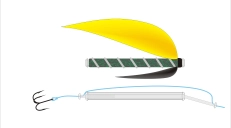


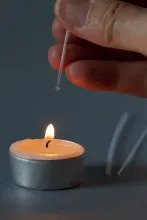


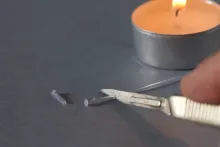

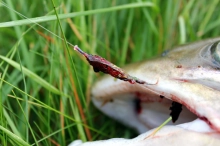

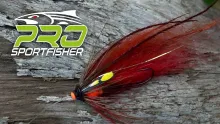






To gordo: Excellent
To gordo: Excellent idea but it wont work with the small hook rigs mentioned in the beginning of the article.
To Stephen Clarke: T
To Stephen Clarke: The fly slides almost as freely on the leader as a "regular" tube fly. Look at the pictures in the last part of the article or better yet: try it out for yourself. You can make the fly slide easier on the line by changing the angle of the holes in the tubing.
To Richard Katzman:
To Richard Katzman: Thanks for your feedback. In the yellow box "Wont I Loose my flies" we mention that you can increase the friction between the FlyOns and the tube fly by adding melted plastic. Your idea of melting a collar works fine as well, but the collar has to be very small. When you tie your tube fly the tying thread can actually compress the tube to the extent that the FlyOns wont fit. You can use this (the compression) as an advantage if you mount a FlyOn when you are tying. This way you can control the friction and get a proper fit (hard to explain in words and so much easier if you try for yourself).
You are absolutely right about the problems that arise if you try to use the FlyOns on different tube diameters. That is the reason we mention the conical FlyOns in the end of the article. If someone could produce these we would be happy. For now we are limited to using one system (1,5 mm inner tubing/2,5 mm outer tubing in our case, but maybe someone can find other systems). The freedom we have gained, especially when using the small hook rigs mentioned in the beginning of the article, makes it worthwhile to tie a bunch of new flies for this system. We use this system almost exclusively now and the only flies we have lost were in the early stages of testing.
One of the advantage
One of the advantages of a tube fly is that it can slide on the leader away from the fish so that teeth do not damage the dressing, thereby increasing the longevity of the fly. Should only one end slide using this system the fly will be lost.
I just tried using t
I just tried using this setup by taking a tube fly that was built on a medium size tube. I used a micro tube as directed by the setup instructions in this article. One thing you forgot to mention is that you must also melt a collar on the side of the insert tube that fits into the tube fly so that it is tight and will not fall out. The insert tubes must be snug inside the tube fly or you will lose your tube fly. There is nothing to hold the insert inside the tube fly. In addition, the insert cannot be too snug or tight because that would defeat the purpose by not being able to get the inserts out quickly to change flies. I think you are going to have a problem switching from different size tube flies, i.e.: large diameter tubes or medium diameter tubes unless you only build on one size tube. If the insert becomes lose, you can kiss your tube fly goodbye. In theory it sounds wonderful. In use is another story. Good luck with this. I will stick to running the tippet through the tube fly and not worry about losing my flies.
Ummm, not knowing be
Ummm, not knowing better when I started using a tube fly; I tied a long loop at the end of the leader, sent the loop through the tube and then through the eye of the hook as a 'loop to loop' or square knot. Save the loop when doing a fly change.....
This is a great idea
This is a great idea. Unfortunately it won't work if your building your flies on micro tubes to begin with. You're basically building your flies on medium or large tubes and sliding the micro tube inside as an insert. The basic idea is worthwhile and definitely has it's place in tube fly tying. Good job!